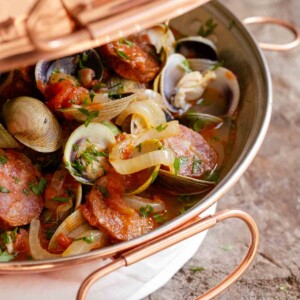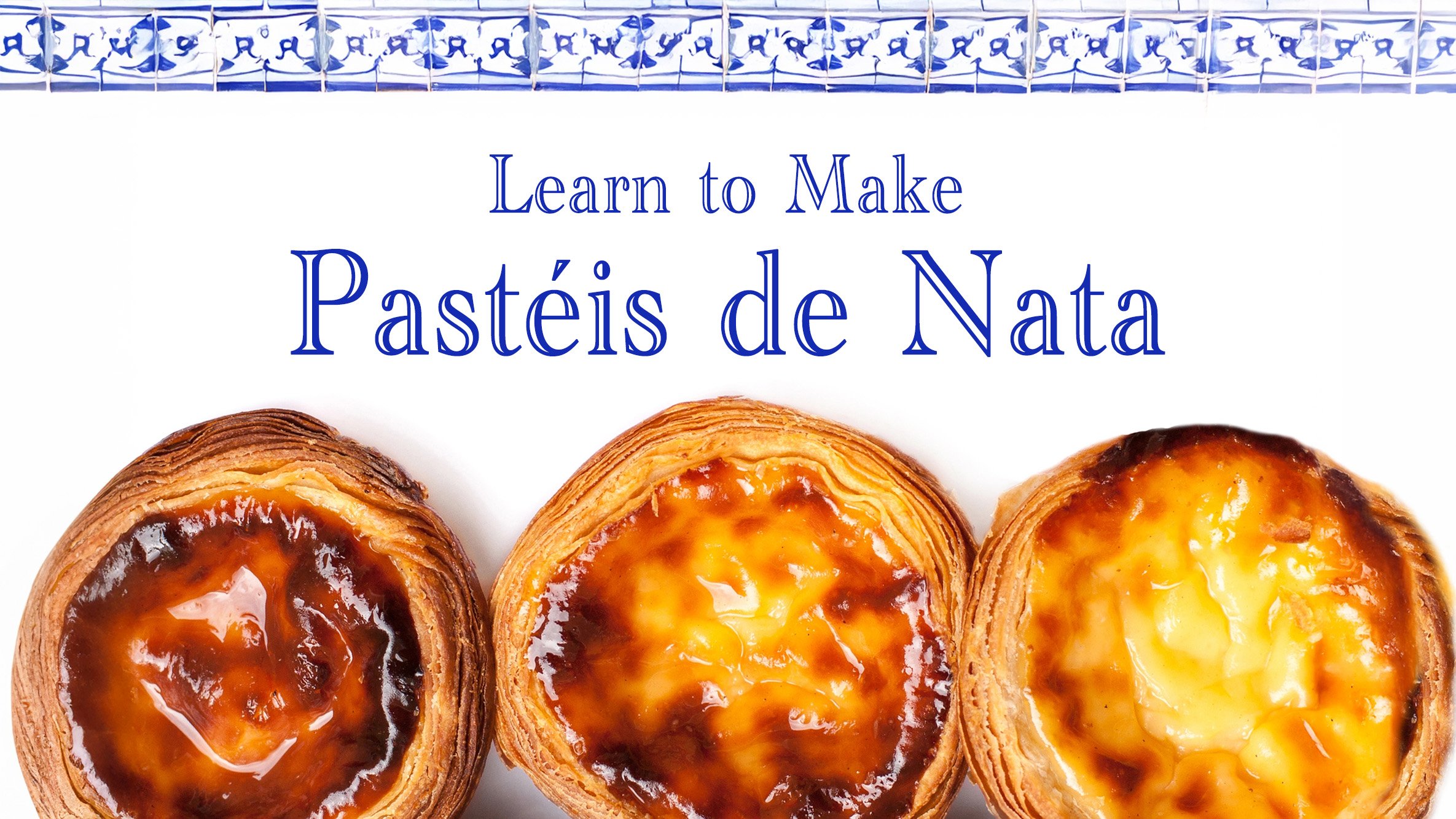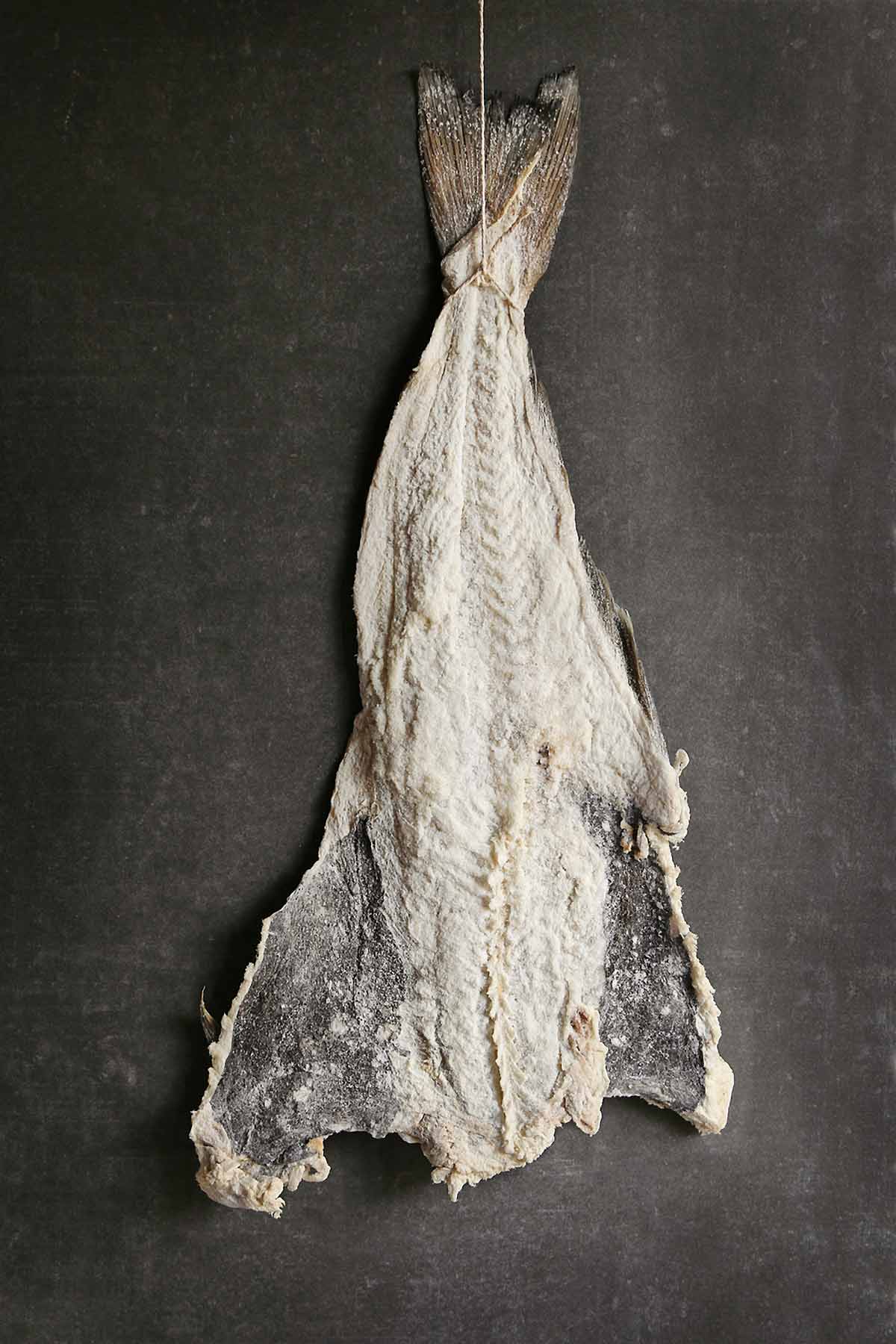Bacalhau a Gomes de Sa
2 hrs 10 mins
Portuguese food is one of the great underappreciated cuisines of the world. Rooted in centuries of exploration, shaped by trade, and deeply connected to the sea, it offers bold flavors, fresh ingredients, and comforting, satisfying dishes.
Whether you’re on the sun-splashed southern coast of the Algarve or in Trás-os-Montes in the mountainous north, Portugal’s culinary traditions reflect a deep love of good food, family, and simple, honest cooking.

At Leite’s Culinaria, I’ve been cooking, writing, and sharing these dishes for years—many of them passed down from my Portuguese family. This page is your passport to all things Portuguese, with a curated collection of my favorite recipes.
Below, you’ll find a curated list of the best Portuguese recipes on Leite’s Culinaria. Whether you’re exploring your heritage, reliving a trip, or simply curious about the cuisine, you’ll find classic seafood dishes, rustic stews, savory sides, and iconic desserts.
Each recipe includes detailed instructions, ingredients, and tips I’ve gathered over years of testing and cooking. Just click on a recipe to get started—and bring the flavors of Portugal into your kitchen. Bom apetite.
Chow,


Hey, I’m David Leite
I’m a three-time James Beard Award-winning food writer, cookbook author, memoirist, podcast host, and publisher. I created this site in 1999 to help you find simple, quick, and wicked flavorful recipes. For the past 24 years, I’ve been cooking, teaching, and writing about all types of food, including those from my Portuguese heritage. Let’s eat! Vamos comer!
2 hrs 10 mins
1 hr 15 mins
1 hr 15 mins
2 hrs 30 mins

Well, bakers, I finally did it. I improved on my pastel de nata recipe. I took me the better part of a year, but I crafted a recipe that 1.) is way easier to make (none of that endless rolling), 2.) has a creamier, foolproof custard that doesn’t curdle, 3.) sports more frilly, crispy layers, and 4.) can be frozen and enjoyed whenever your heart desires.
Get the replay of the 3-hour class, equipment list, shopping list, and recipe.
For just $40.00
2 hrs 30 mins
1 hr 30 mins
5 mins
Because salt cod is one of Portugal’s iconic foods, many think the Portuguese were instrumental in its discovery, which, alas, they weren’t. Nearly five hundred years before the Portuguese began fishing for cod in the Grand Banks off the coast of Newfoundland, the Vikings had stumbled upon one of the world’s largest caches of cod and figured out how to air-dry the fish.
The reason why salt cod is so prized in the Portuguese community, besides being a cheap and shelf-stable staple, is because the drying and salting give a superior taste and texture to an otherwise characterless fish. When a meaty slab of bacalhau is properly desalted and cooked, it will flake perfectly and have just the slightest toothsomeness.
Look for salt cod, preferably from Norway, in Portuguese, Italian, Greek, Spanish, or Latin markets. I’ve also had very good luck with several online purveyors. Buy the thickest, firmest pieces possible; they’ll make for a more substantial meal and a prettier presentation.
To reconstitute the bacalhau, rinse it well under running water to remove surface salt. Place the pieces in a large bowl and cover with cold water by 2 inches. Stretch plastic wrap over the top and refrigerate, changing the water several times, until the fish is sufficiently desalted for you. Take a nibble—it’s perfectly safe to eat. If it’s too salty, change the water again, and let it sit for a few more hours. The process can take anywhere from 12 to 48 hours, depending on the size of the fillet. Above all, bear this in mind: you can always add more salt, but you can’t remove it from a finished dish.

1 hr 15 mins
5 hrs 30 mins
2 hrs 30 mins
4 hrs 15 mins
3 hrs 10 mins
2 hrs 10 mins
1 hr 35 mins
1 d 30 mins
35 mins